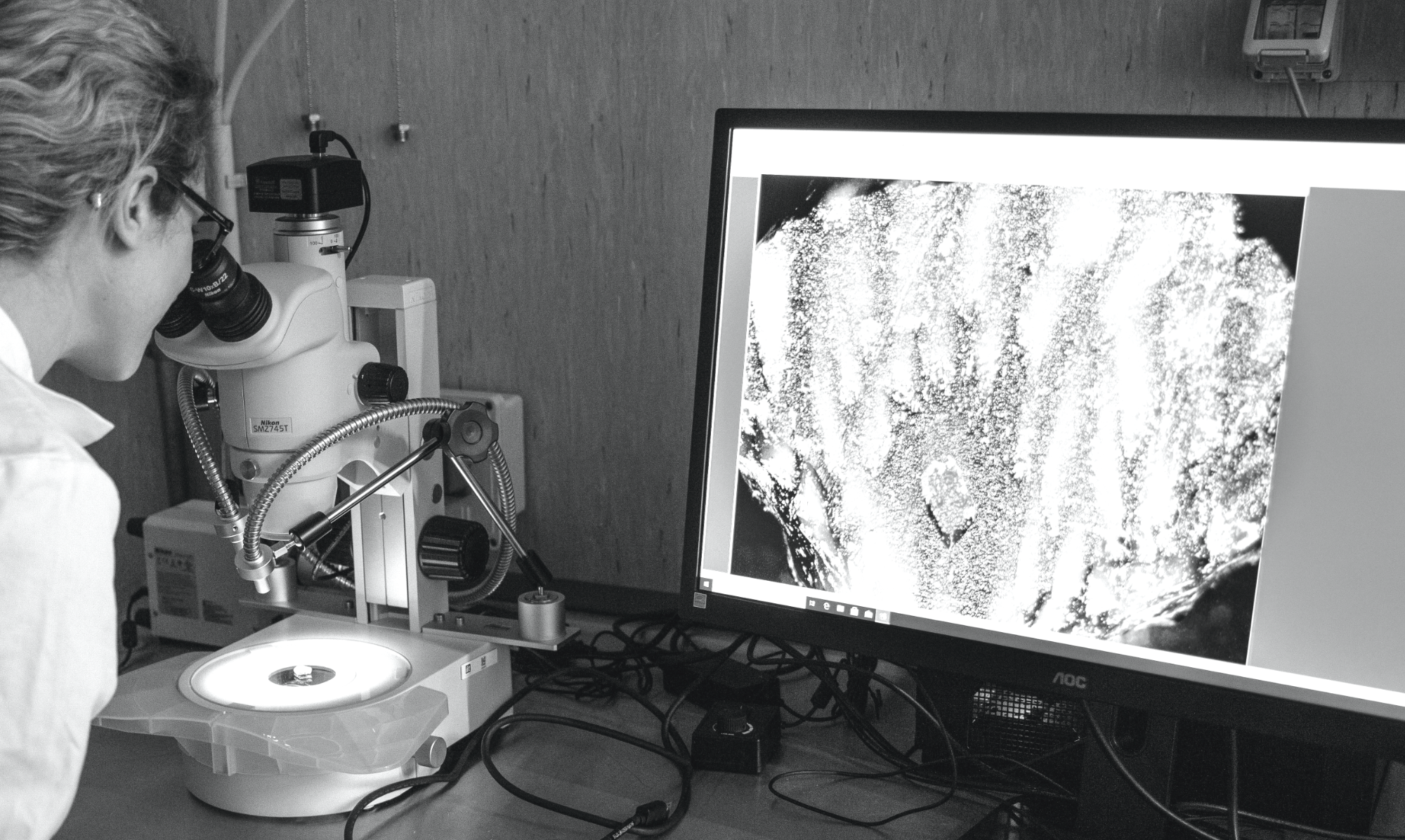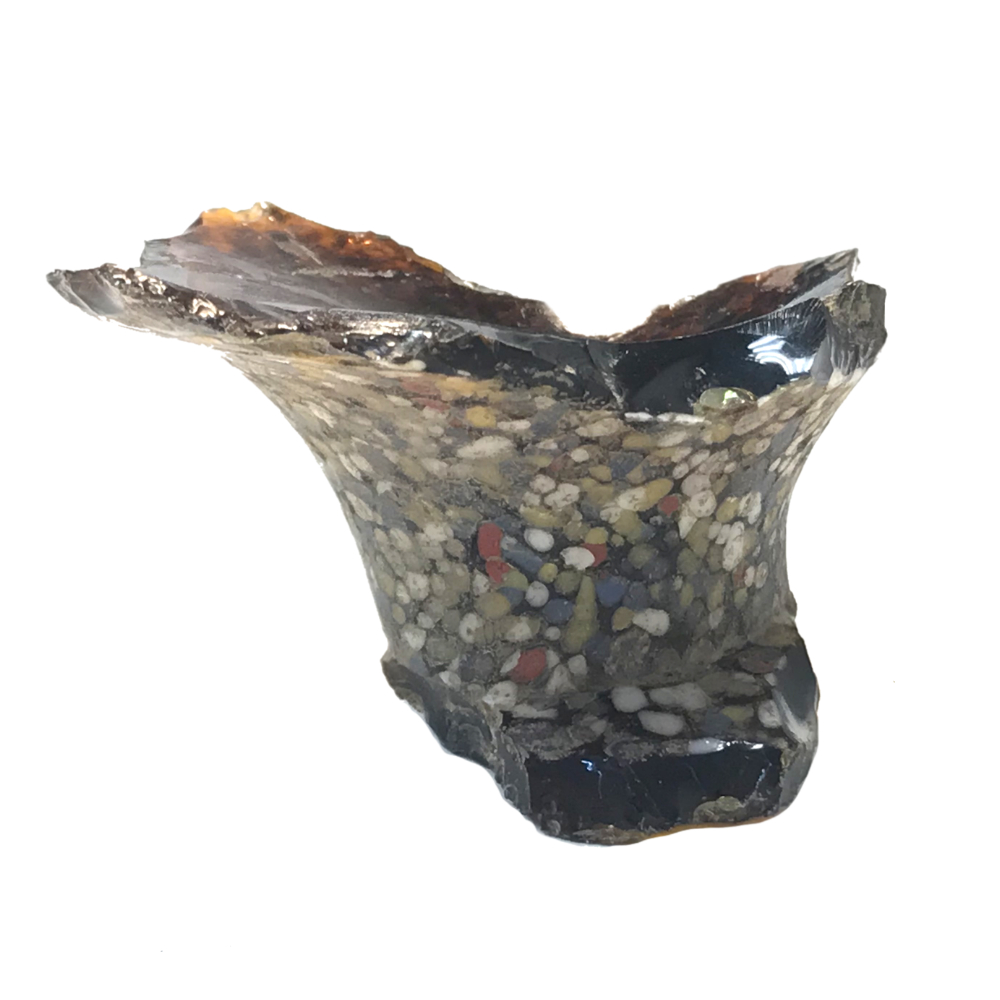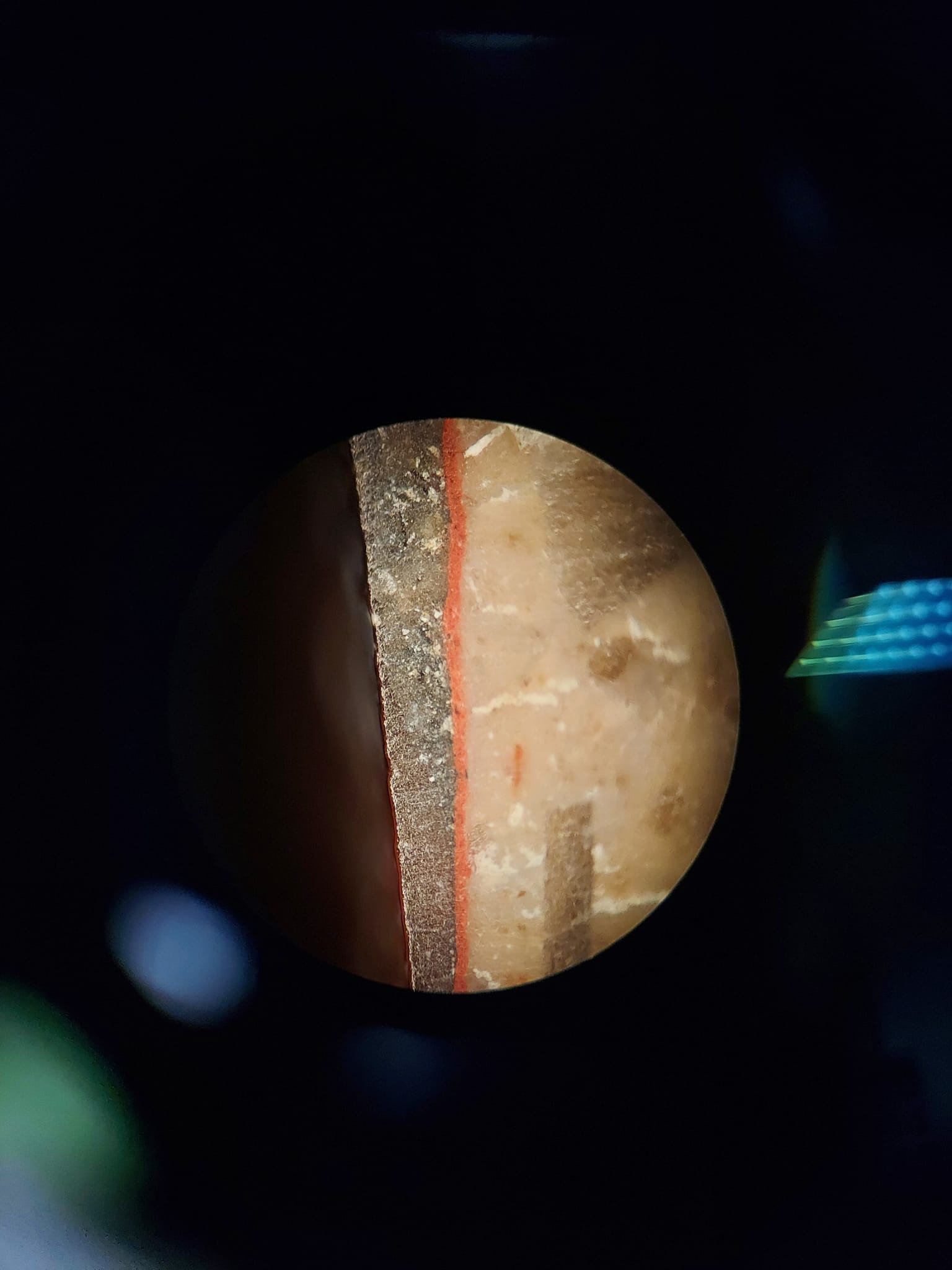


Vitreous materials are found during archaeological excavations in a variety of degradation conditions that can range from pristine state, without any visible deterioration, to heavily a degraded state that attests to glass material transformation into corrosion products. Also in the case of medieval stained glasses or glasses stored in museums, vitreous material deteriorates due to the exposition to external atmospheric agents or ambient humidity. In all cases, the composition of the glass itself, coupled with the physical and chemical properties of the environment, is the key factor that determines the rate of deterioration. Despite a large body of research devoted to the study of historical glass, the exact mechanisms of deterioration remain elusive. Therefore, ancient glass artwork requires the development of innovative characterization procedures and the synergy of several techniques to get the information needed to design an ideal protective coating to slow down and halt the corrosion process.
The in-depth analysis and comprehensive studies of the corroded glass samples found in archaeological sites are pivotal as they offer a unique way to fully understand the degradation process of the material in different environmental conditions over extremely long periods. The conservation state of these materials is evaluated at the macroscopic, microscopic and nanometric scales, from the surface layers to the bulk of the artefacts.
The final purpose of the research is to fully understand and then counteract the ageing process in glass objects by retrieving and combining information on the glass corrosion mechanisms at the molecular and nanometer scales.

Fresco is the art of painting on freshly applied moist lime plaster with aqueous pigments that, once the carbonation process is completed, are incorporated with the plaster. It is a complex decorative system composed of masonry support and layers of mortar with different grain sizes and compositions called (from the innermost to the outermost) rinzaffo, arriccio, intonaco, paint layer, and carbonation. Considering the complexity of frescoes, the diagnostic procedure for the deep characterization of the frescoes, from bulk composition to the identification of degradation products, requires the use of several analytical techniques in order to get a comprehensive picture of the artwork material. The evaluation of the petrographic and mineralogical composition of mortars, together with verification of the presence of additives, is the first step in the analysis process. Chemical data on the content of major, minor, and trace elements are required to provide specific information on the geological provenance of mortar aggregates and carbonate stones used for the production of the binder. The study of the pictorial layer is carried out using several spectroscopic techniques coupled with electron microscopy and X-ray analysis.
Moreover, this in-depth characterization provides a solid ground to create accurate mock-ups, pivotal to testing and developing protective systems.
Sculptures, weapons, coins and jewellery have rested over long-time scales in aggressive environments prior to their excavation or retrieval. Although a certain degree of equilibrium has been attained over the years, metals and metal alloys suffer from significant alterations of their constituent materials with the formation of thick and complex layers of patina in view of their extreme susceptibility to corrosion. On the other hand, it is the patina itself that provides crucial information about the alteration process, the original conservation environment and the actual state of conservation of the item. Clearly, at this point, it is of paramount importance to establish non-destructive and non-invasive multi-scale protocols for its characterization.
Microscopic, spectroscopic, electrochemical and tomographic techniques including XCT, XRF, FIB-SEM and EIS are deployed by our team to decipher the characteristics and features of metal artefacts. Important efforts are directed to investigate how multiple techniques can intersect and cooperate, synergistically expanding their potential. New non-invasive characterization protocols for archaeological metals will be extremely helpful to scholars, restorers and conservators in avoiding the sacrifice of ancient artefacts while shedding new light on older civilizations.

Manuscripts, illuminated codex, books, documents, and letters are composite materials with great cultural heritage value, given that they combine the artistic value of the object with the information stored for centuries in the written contents.
Paper is the most widely used writing support since the Middle Ages when cotton paper replaced parchment as the favourite crafting material due to its affordability. Consequently, cellulose-based material combined with ink has become the most widespread vehicle for the acquisition, storage and dissemination of human knowledge and still represents a valuable alternative to digital media.
Unfortunately, humanity over centuries has already lost the majority of its written documents due to the vulnerability of the writing support, above all papyrus and paper. Therefore, paper degradation (e.g. embrittlement, foxing, wrinkling, paper sheet merging) is a major issue for cultural heritage.
The processes of deterioration can be extremely complex also due to the conservation environment and can be triggered by biological (e.g. moulds and insects), chemical (e.g. acid hydrolysis, corrosion, combustion) and physical factors (e.g. UV radiation and excessive humidity).
Venetian libraries represent a great opportunity to elucidate the main processes behind degradation, with non-invasive analytical techniques, like optical microscopy, Raman, UV-Vis and IR spectroscopy. These in-depth studies provide us with the necessary information to isolate the main variables related to deterioration and to act effectively against them.
Furthermore, we work on a multidisciplinary effort to develop non-invasive THz time-domain imaging, for both digitization and characterization purposes.
Mosaics are beautiful decorative artworks created by using ancient and complex techniques. These compositions are built by sophisticated engineering based on the overlapping of several strata mutually interacting. The external surface is made of tesserae (little pieces of stones, glass, cotto but also gems and shells) that are nested in a layer of mortar. Under the decorative strata, a series of layers of preparation allows the mosaic to be glued to the support. The complexity of this heterogeneous system makes its conservation an open challenge for restorers and materials scientists. Thus, an in-depth study of all the materials used for the creation of mosaics is clearly necessary. Optical and electron microscopy coupled with spectroscopic and X-ray techniques are elective approaches in order to characterize both the tesserae and the mortars. These analyses allow for gaining fundamental information to understand the technology used and the provenance of the materials that compose mosaics. This in-depth knowledge is necessary to design ideal preservation approaches and to rationally create innovative formulations for long-lasting conservation.